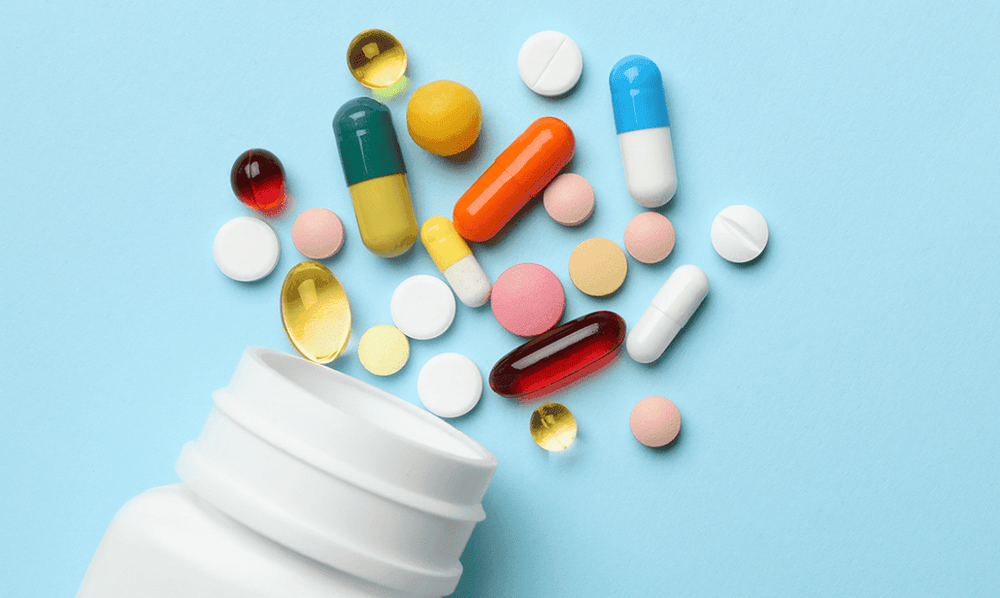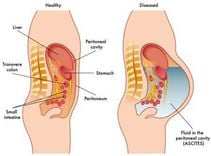This is an automatically translated article.
The article is written by Master - Doctor Mai Vien Phuong - Head of Gastrointestinal Endoscopy Unit - Department of Medical Examination and Internal Medicine - Vinmec Central Park International General Hospital.Irritable bowel syndrome (IBS) is a chronic, often debilitating, and very common disorder of the gut-brain interaction (previously known as functional gastrointestinal disorder). In clinical practice, IBS is characterized by recurrent abdominal pain and dyspepsia. In the following article, we will explore some of the new medications that are recommended to be used to treat IBS.
1. The authors recommend the use of Rifaximin for the treatment of IBS-D symptoms
Rifaximin is a non-absorbable antibiotic approved by the US FDA for the treatment of patients with IBS-D. Rifaximin treatment is based on the hypothesis that a fraction of patients with IBS-D have an abnormal microbiome. The use of this drug is supported by numerous clinical trials.In 2 large-scale, identically designed, double-blind studies, rifaximin provided a significant benefit over placebo. In the month following a short course of rifaximin (2 weeks), 40.8% of subjects improved in both abdominal pain and stool consistency compared with 31.7% in the placebo group.
In the third trial, the effectiveness of using Rifaximin was also evaluated. In this trial, all subjects were initially treated with open-label rifaximin. After this initial treatment, 44% of subjects responded to rifaximin. Subjects were then followed for 18 weeks to assess symptom recurrence. Among the initial responders to rifaximin, 36% did not relapse. The remaining 64% eventually relapsed and were then randomly assigned to continue rifaximin or placebo for 2 weeks. After discontinuation of treatment, Rifaximin was superior to placebo in improving IBS-D symptoms. This study supported the approval of rifaximin for treatment with up to 2 additional treatments for symptom recurrence.
A recent meta-analysis summarized 5 controlled trials of rifaximin in patients with IBS-D. These demonstrate a significant benefit of rifaximin over placebo. Safety was further tested for the development of bacterial resistance. Even after 3 treatments with rifaximin, there was no stable resistance in the microbiome. Furthermore, there were no significant disruptions in the microbiome and the development of C. difficile colitis is rare.
There is still speculation about the primary mechanism of action of rifaximin in IBS patients. A new study derived from the Rifaximin detox trial provides some clear information. In this trial, a breath test was conducted on a small group of patients. A positive breath test means a higher response rate (56%), while a negative breath test means a lower response rate to Rifaximin (25%). Although this is a small subset of the total number of studies, these data support that baseline microbiome abnormalities may be a predictor of response to rifaximin. In summary, rifaximin is an effective, safe treatment option for patients with IBS-D symptoms.
2. Alosetron should be used to relieve IBS-D symptoms in women with severe symptoms who have failed conventional therapy
Alosetron hydrochloride has been shown to improve symptoms, reduce pain and discomfort caused by IBS, and improve multi-intestinal symptoms such as urinary urgency, stool consistency, and stool frequency in women with IBS -D. Serotonin (5-hydroxytryptamine; 5-HT) plays an important role in the regulation of visceral sensation and motility. Alosetron is a 5-HT antagonist and, therefore, its main mechanism of action in the treatment of IBS-D is to slow intestinal transit.Two recent studies (both double-blind and randomized controlled trials) have evaluated the effectiveness of different doses of Alosetron; from 0.5 to 1.0 mg twice daily, the improvement ranged from 12.2% to 32% compared with placebo. The current US FDA IBS-D clinical trial pool has identified an overall response rate of 45%.
The safety profile of Alosetron has been of concern since it was voluntarily recalled on November 28, 2000, with post-marketing reports of an increased incidence of ischemic colitis , complicated constipation (obstruction or perforation) and death. Constipation was the most likely side effect with 4.55%. Alosetron was reintroduced under the risk assessment and mitigation strategy (REMS) in June 2002, limiting its use to women experiencing chronic (>6 months) IBS-D symptoms. who have not previously responded to traditional therapies.

In summary, current evidence supports the use of Alosetron for the relief of symptoms in women with severe IBS-D when other interventions have failed. In small doses (0.5–1 mg each), it appears to be safe and there is little risk of developing severe constipation or ischemic colitis.
3. The authors suggest the use of mixed opioid agonists/antagonists for the treatment of IBS-D symptoms.
Eluxadoline is a peripheral-acting mu- and kappa-opioid receptor agonist/delta-opioid receptor antagonist approved for the treatment of IBS-D in men and women. The recommended dose is 100 mg po, although a lower dose (75 mg) is recommended for some patients.Two large, phase 3, randomized, double-blind, placebo-controlled studies evaluated the efficacy and safety of eluxadoline in adults meeting Rome III criteria for IBS-D. As a result, the worst episodes of abdominal pain were reduced from baseline with a uniform stool daily score of <5 using the Bristol Stool Scale. Efficacy results were pooled from a 26-week study and the first 26 weeks of a separate 52-week study.
In these 2 studies, the primary effect was more likely to be met in patients treated with eluxadoline 75 mg or 100 mg twice daily than in those treated with placebo in both 12 the first week (26.2% and 27.0%, compared with 16.7% for placebo) and the first 26 weeks of the 2 trials (26.7% and 31.0%, vs 19.5%, respectively) placebo).
The most commonly reported side effect with eluxadoline use was constipation (8% vs 2.5% for placebo). This tends to happen within the first 3 months of treatment. Nausea was reported by 7.7% of patients (compared to 5% of placebo); Cardiac events were few and did not differ between the drug and placebo.

In summary, eluxadoline has been shown to improve IBS-D symptoms in men and women. A prospective, randomized, and retrospective analysis also found that eluxadoline improved symptoms in IBS-D patients who had failed previous loperamide trials.
Please dial HOTLINE for more information or register for an appointment HERE. Download MyVinmec app to make appointments faster and to manage your bookings easily.
References: journals.lww.com













